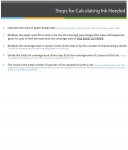hardtemper
Member
Hello all !
Im student and i need little information about ink consumption in flexo printing and gravure printing. What is the consumption of 1 lb/kg per sqm/sq inch. I found table for offset ink consumption per 1lb but cant find such information about flexo ...
Im student and i need little information about ink consumption in flexo printing and gravure printing. What is the consumption of 1 lb/kg per sqm/sq inch. I found table for offset ink consumption per 1lb but cant find such information about flexo ...












